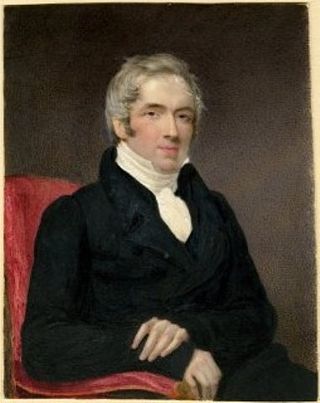John Smith (1781-1855) est un encadreur et un marchand de tableaux londonien. Il est surtout connu pour être l’auteur d’un Catalogue raisonné of the Works of the Most Eminent Dutch, Flemish, and French Painters, 1829-1842.
| Naissance | |
|---|---|
| Décès | |
| Nationalité | |
| Activités |
A catalogue raisonné of the works of the most eminent Dutch, Flemish, and French painters (d) |
Biographie
John Smith compta parmi sa clientèle sir Robert Peel, qui devait devenir Premier Ministre et contribuer à la fondation de la National Gallery. En 1871, c'est à la société de John Smith que ce musée acheta 77 tableaux importants de peintres néerlandais.
En 1829, Smith commence la publication d'un Catalogue Raisonné of the Works of the Most Eminent Dutch, Flemish, and French Painters, 1829-1842 (un « Catalogue raisonné des œuvres des peintres néerlandais, flamands et français les plus éminents »). L'ouvrage, dédicacé à Peel, fut conçu avec pour principal objectif de promouvoir la fiabilité et l’intégrité dans la vente d’œuvres d’art.
John Smith était assisté dans ses affaires par ses fils, Samuel Mountjoy Smith et John M. Smith. Samuel Theobald Smith († 1905), le petit-fils de John Smith, prit la relève. Le stock de tableaux de la société de ce dernier, S.T. Smith & Son, apparut par la suite dans plusieurs ventes, en 1904, 1905, et 1910.
Le catalogue raisonné
Comptant au départ 8 volumes publiés de 1829 à 1837, auquel vint s’ajouter, en 1842, un supplément constituant un 9e volume, le catalogue raisonné de John Smith décrit les œuvres attribuées dans le deuxième quart du XIXe siècle à quarante et un peintres : trente-quatre peintres des Pays-Bas septentrionaux, quatre peintres des Pays-Bas méridionaux (vol. 2 et 3 + Coques) et trois peintres français (vol. 8) :
- Partie 1re (1829) : Gérard Dou, Pieter Van Slingelandt, Frans Van Mieris, Willem Van Mieris, Adriaen Van Ostade, Isaac Van Ostade, Philips Wouwerman ;
- Partie 2e (1830) : Pierre-Paul Rubens ;
- Partie 3e (1831) : Antoine Van Dyck, David Teniers le Jeune ;
- Partie 4e (1833) : Jan Steen, Gerard Ter Borch, Eglon Van der Neer, Pieter De Hooch, Gonzales Coques, Gabriel Metsu, Caspar Netscher, Adriaen Van der Werff, Nicolas Maes, Godfried Schalcken ;
- Partie 5e (1834) : Nicolaes Berchem, Paulus Potter, Adriaen Van der Velde, Karel Dujardin, Albert Cuyp, Jan Van der Heyden ;
- Partie 6e (1835) : Jacob Van Ruysdael, Meindert Hobbema, Jan Both, Andries Both, Jan Wynants, Adam Pynacker, Jan Hackaert, Willem van de Velde, Ludolf Bakhuizen, Jan Van Huysum, Rachel Ruysch ;
- Partie 7e (1836) : Rembrandt ;
- Partie 8e (1837) : Nicolas Poussin, Claude Lorrain, Jean-Baptiste Greuze.
- Partie 9e - Supplément (1842) : Ajouts et corrections pour tous les peintres repris dans les précédents volumes.
L'ouvrage servit de base au Beschreibendes und kritisches Verzeichnis der Werke der hervorragendsten holländischen Maler des XVII. Jahrhunderts... dont Cornelis Hofstede de Groot dirigea la rédaction de 1907 à 1928. Voir l'article consacré à Hofstede de Groot pour un tableau comparatif entre les deux catalogues.
Critique de l'œuvre
Smith n'était pas un historien de l'art, mais un marchand de tableaux. De ce simple fait, on peut le suspecter d'avoir pu, sciemment ou non, confirmer certaines attributions en fonction du profit qu'il pouvait en tirer.[réf. nécessaire]
Annexes
Bibliographie
- (en) John Smith, A Catalogue Raisonné of the Works of the Most Eminent Dutch, Flemish, and French Painters : in which is included a short biographical notice of the artists : with a copious description of their principal pictures : a statement of the prices at which such pictures have been sold at public sales on the continent and in England : a reference to the galleries and private collections, in which a large portion are at present : and the names of the artists by whom they have been engraved : to which is added, a brief notice of the scholars and imitators of the great masters of the above schools, Smith & Sons, Londres :
- Partie 1re. – En ligne sur Internet Archive.
- Partie 2e. – En ligne sur Internet Archive.
- Partie 3e. – En ligne sur Internet Archive.
- Partie 4e. – En ligne sur Internet Archive.
- Partie 5e. – En ligne sur Internet Archive.
- Partie 6e. – En ligne sur Internet Archive.
- Partie 7e. – En ligne sur Internet Archive.
- Partie 8e. – En ligne sur Internet Archive.
- Partie 9e, Supplément. – En ligne sur Internet Archive.
- (en) Ivan Gaskell, « Tradesmen As Scholars : Independencies in the Study and Exchange of Art », dans Elizabeth Mansfield (dir.), Art History and Its Institutions : Foundations of a Discipline, Routledge, Londres - New York, 2002 (ISBN 0415228697), p. 152 et suiv.
Liens externes
Wikiwand in your browser!
Seamless Wikipedia browsing. On steroids.
Every time you click a link to Wikipedia, Wiktionary or Wikiquote in your browser's search results, it will show the modern Wikiwand interface.
Wikiwand extension is a five stars, simple, with minimum permission required to keep your browsing private, safe and transparent.

